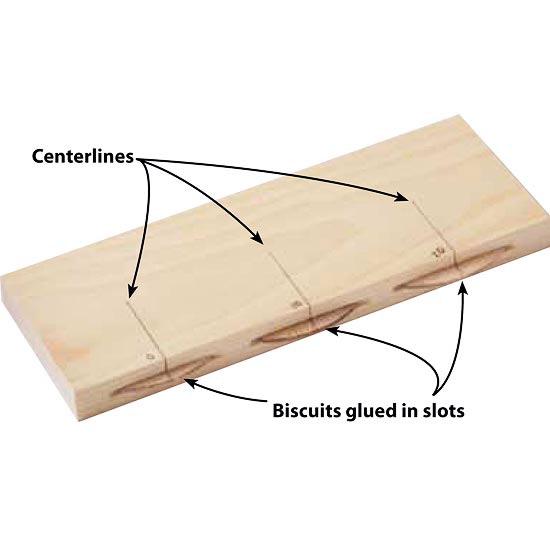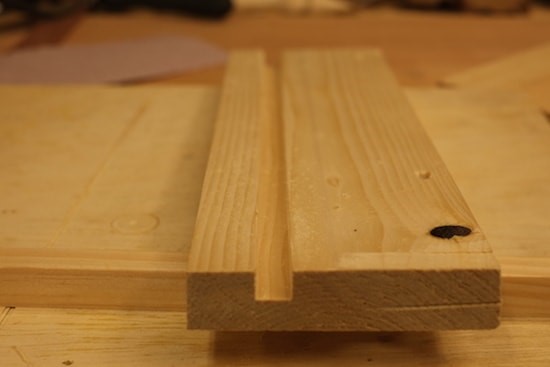Cutting deep tight slots can be problematic for this type of cutter sometimes. – Compression: A compression cut is a combination of upcut and downcut. It has the spiral set to pull up at the bottom of the material, then it reverses direction at the top. The router will turn it to sawdust but you can buy moldings at most D.I.Y. Use a router with a cutting bit, you say you will be using an old 2 inch door, so cut a slot in each side to within an inch or so of the front of the shelf, screw the molding to the walls and slide the shelf over the moldings. Place the wood to be cut on the routing table horizontally. Using a straight-edged ruler, draw clear and accurate slots boundary on both sides. Ensure you use a sharp and visible pencil while drawing the slot lines. Set the bit size in the router.
I’m working on a new woodworking project that involved cutting through-slots for bolts in a couple of boards. The two boards will act as adjustable arms to hold a dowel handle for a garden cart.
I have cut shorter and narrower slots using a table-mounted router for a coin bank. These bolt slots were considerably longer and 1/4' wide so I was reluctant to use the same technique. I don’t have a plunge router – which would probably be the fastest and easiest way to do this.
Crowd-sourcing ideas
After checking a couple of woodworking forums for ideas – including one where someone trying this on a router table said the board 'shattered' (yikes!) – the general consensus seemed to be todrill out most of the material and clean up the slot later with a coping saw.
That sounded good (and safe) to me.
Since my slot was only 1/4' wide, I decided best approach was to use a 1/4' Forstner bit in a drill press to define the slot and remove most of the material, then clean up the slot with a file and sandpaper.
Cutting A Deep Slot In Wood Chipper

The shaft on the 1/4' bit was larger than the bit itself so I had to flip the board over to drill all the way through the 3/4' material. It’s probably a good idea to do this anyway to avoid tear-out unless you have a backer board underneath when you’re drilling.
What to do

Drilling
- Mark the centre points for each end of the slot in the blank and use a nail or awl to punch a small hole for orienting the bit.
- Set up the drill press with a Forstner bit the same size as the slot you’re cutting. You’ll need to attach a fence to the drill press table to maintain a straight line as you drill along the length.
- Place the blank against the fence and lower the bit. Adjust the fence and blank so the point of the Forstner bit enters the small punched hole. Clamp the fence in place, slide the blank to the mark at the other end of the slot and check that it’s aligned properly.
- Put a mark on the edge of the board that’s against the fence. Keep this edge against the fence when you flip the board over and drill the other side. This ensures the holes are in line even if your a hair off centre of the board.
- Turn on the drill press and drill the each end hole to define the slot – drilling about two-thirds to three-quarters of the way through the board. After that, just keep drilling holes and moving the work piece along the fence, overlapping holes just enough to keep point of the bit entering new wood. The slot will fill up with shavings which you should clear out if they get in the way.
- Once you’ve drilled the length of the slot, clean it out with a screw driver or something similar. Flip the board over (keeping the same edge against the fence).
- Repeat the process starting with the end holes. It doesn’t matter which direction you work in.
A COUPLE OF NOTES:
- If you’re making a wider slot, you may want to make an additional pass to remove the 'peaks' between holes.
- If you have a mortising chisel & bit you could swap that in once you’ve drilled the end holes.
Cleaning up the slot
Cutting A Deep Slot In Wooden
- After the drilling is complete, clean out the shavings with an awl or small screwdriver.
- Clamp the work piece on edge to your bench and use a flat file to remove the high points left between the drilled holes being careful not to hit the rounded ends of the slots.
- Wrap a small piece of sandpaper around a drill bit (smaller than the slot) to sand the ends of the slot.
- After filing off most of the rough surfaces in the slot, wrap some sandpaper around the file and use it to finish cleaning up the slot.
Cutting A Deep Slot In Wood Floors

Cutting A Deep Slot In Wood Lathe
If the slots were 1/2” wide or more, I probably would have used a jigsaw and straightedge to clean up the slots before sanding.